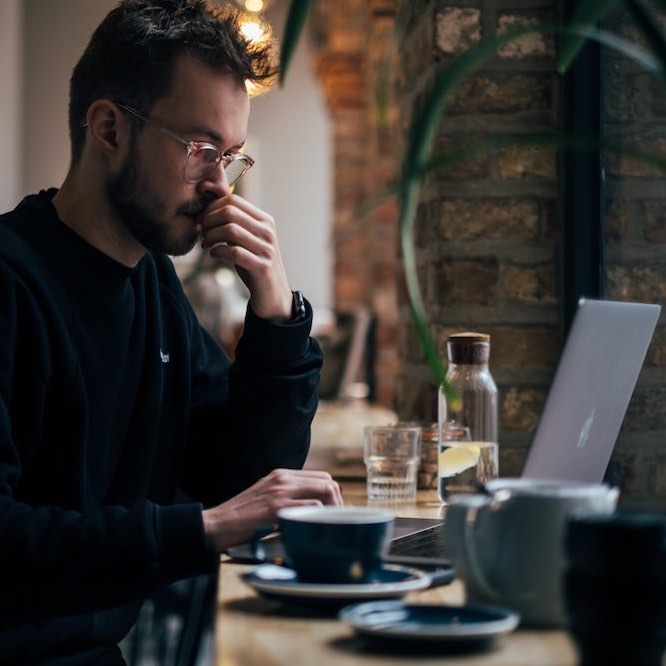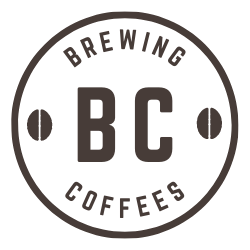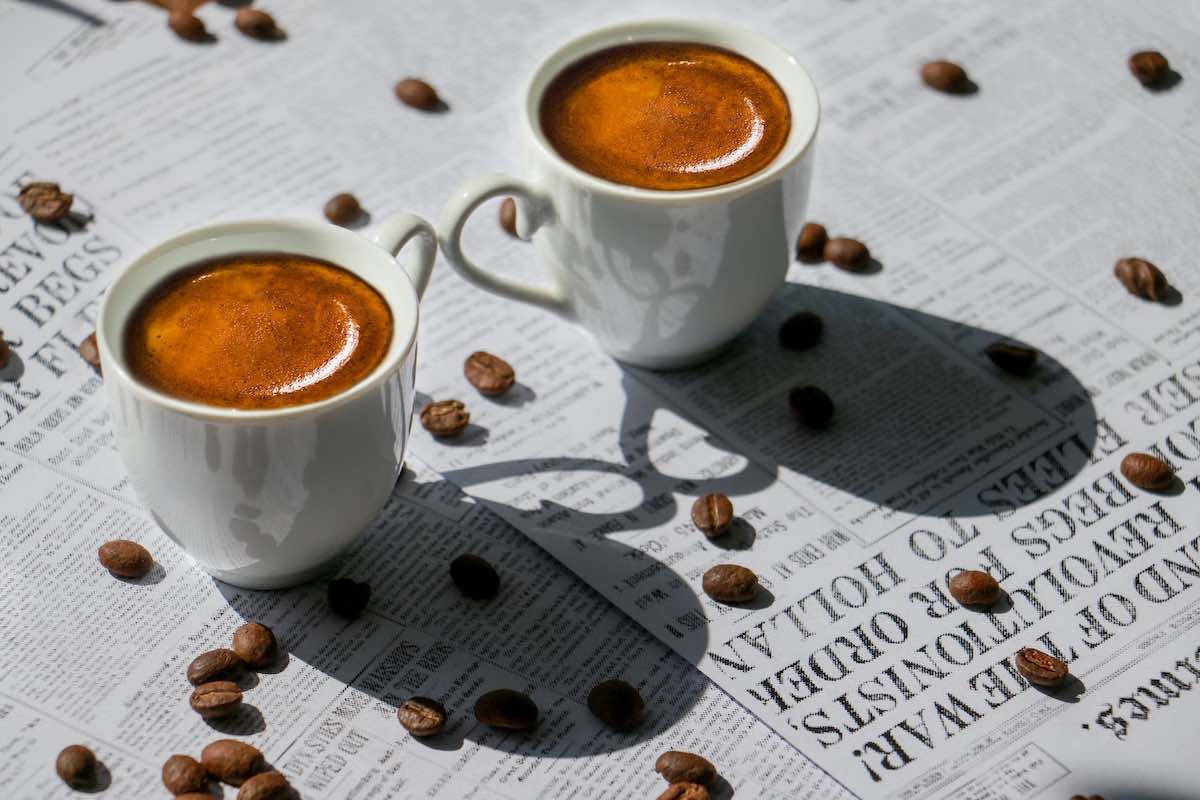As much as we love espresso, we still need to be wary of one thing, the caffeine. Take too much, and you may have issues falling asleep. As we sip our espresso, we should know the caffeine content inside. How much caffeine is there in a shot of espresso?
A single shot of espresso should contain around 45 – 118 milligrams of caffeine. Actual caffeine count may differ based on the roast, bean types, and amount of coffee ground used. You should be ok taking 2-3 servings of espresso daily and staying below USFDA’s daily recommendation.
In this article, we explore how much caffeine is in a shot of espresso. We also look at some factors that determine the final amount of caffeine inside.
How Much Caffeine Is In A Shot Of Espresso?
| Coffee Houses | Caffeine (Single Shot Espresso) | Caffeine (Double shot Espresso), Approx. |
|---|---|---|
| Starbucks | 75mg | 150mg |
| Dutch Bros | 46.75mg | 93.5mg |
| Peet’s | 70mg | 140mg |
| Tim Hortons | 45mg | 90mg |
| Dunkin | 118mg | 236mg |
Suppose you take some time to check out the caffeine count in major coffee chains. In this case, you may discover that the caffeine count can differ widely between each coffee house.
On the lower end, you have Dutch Bros and Tim Hortons. A single shot of espresso only comes with 40 plus milligrams of caffeine. Based on this, it will take 8-9 espresso shots to reach the US Food and Drug Administration’s (USFDA) recommendation of no more than 400mg of caffeine daily.
However, Dunkin’s espresso is the strongest here, with a whopping 118 mg of caffeine per single shot. That’s less than 4 shots away from USFDA’s daily recommendations.
We also see fit to include caffeine count for double-shot espresso. This is because two espresso shots are used in many espresso-based coffee drinks, such as Americano. In fact, certain drinks, such as Starbucks’ Shaken Espresso, use three shots of espresso.
We explore the reasons below if you are wondering why the caffeine amount differs so much between coffee houses. Read on.
What Determines The Amount Of Caffeine In Espresso?
Many factors may determine the actual amount of caffeine in espresso. Depending on these factors, your coffee may have higher or lower amounts of caffeine.
Coffee Bean Type / Cultivar
Coffee bean type can hugely influence the amount of caffeine inside your espresso. There are 4 major types or cultivars of coffee beans. These are Arabica, Robusta, Excelsa and Liberica.
Of these coffee cultivars, the Robusta usually contains the highest concentration of caffeine. Arabica and Liberica follow, and Excelsa has the lowest amount of caffeine.
Suppose you prepare espresso with two different blends of coffee grounds. One has 50% Robusta and 50% Arabica. The other has 25% Robusta, 50% Arabica, and 25% Excelsa.
In this case, the espresso pulled from the first blend would have more caffeine. This is because it has more Robusta beans in it.
Roast Level
When roasting coffee, roasters generally roast beans into several major levels. These are light, medium, and dark. You may hear of espresso roasts, but these are variants of roasts. French roast, for example, is a variant of dark roast coffee.
The darker the roasts, the less caffeine is inside the beans. This also means dark or light roasts will have higher amounts of caffeine than medium or dark roasts.
However, the caffeine difference is not too significant. Coffee bean types can affect caffeine levels more noticeably.
Coffee Ground Used
Baristas usually pack the portafilter full of coffee grounds when making espresso before feeding it into the coffee machine. Generally, baristas use about 6-8 grams of ground coffee to pull out about 30ml of an espresso shot.
This is also another way to influence the amount of caffeine in your espresso. The more coffee ground used to make your espresso, the more caffeine it will have.
The reason is simple. The more coffee ground used, the more caffeine is extracted from the beans to make your espresso.
Perhaps coffee chains like Dunkin are much more generous with the coffee grounds. As a result, their espresso packs more caffeine than others.
Regular or Decaf
Coffee can come regularly or be decaffeinated. With decaf coffee, the caffeine content was removed. This is usually done through Swiss water or the Carbon Dioxide process.
If you pull your espresso using a decaf coffee, your coffee will almost be devoid of caffeine. In most cases, a shot of decaf espresso should only load you up with less than 2 milligrams of caffeine.
Wrapping Up
In this article, we explored the amount of caffeine in a single shot of espresso. We also looked at the factors determining the amount of caffeine in espresso.
There may be around 45 to 118 mg of caffeine in a single-shot espresso. This means, on average, you can enjoy around 4-5 shots of espresso a day before reaching the US FDA’s advised limit of no more than 400mg of caffeine daily.
However, the amount of caffeine inside espresso may depend on the coffee cultivar, roast level, and coffee ground use.
Common Questions About Caffeine In Espresso
Generally, there may be around 45 – 118 mg of caffeine per shot of espresso. The amount is taken from looking at caffeine content in espresso shots served in major coffee chains in the US.
Factors such as coffee bean cultivars, roast level, and amount of ground coffee used determine the amount of caffeine in espresso. Lightly roasted regular Robusta coffee should produce espresso with more caffeine per ounce.
You can reduce the amount of caffeine in your espresso by using coffee cultivars with lower caffeine counts, such as Arabica or Exelsa. You can also use less coffee grounds to brew your espresso or just drink decaf espresso instead.

Hey there! I’m Austin and I love coffee. In fact, I drink about 5 americanos a day. I started BrewingCoffees because I wanted to share my love of coffee with the world. Before starting BrewingCoffees, I worked as a Barista for 7 years.


Leave a Reply